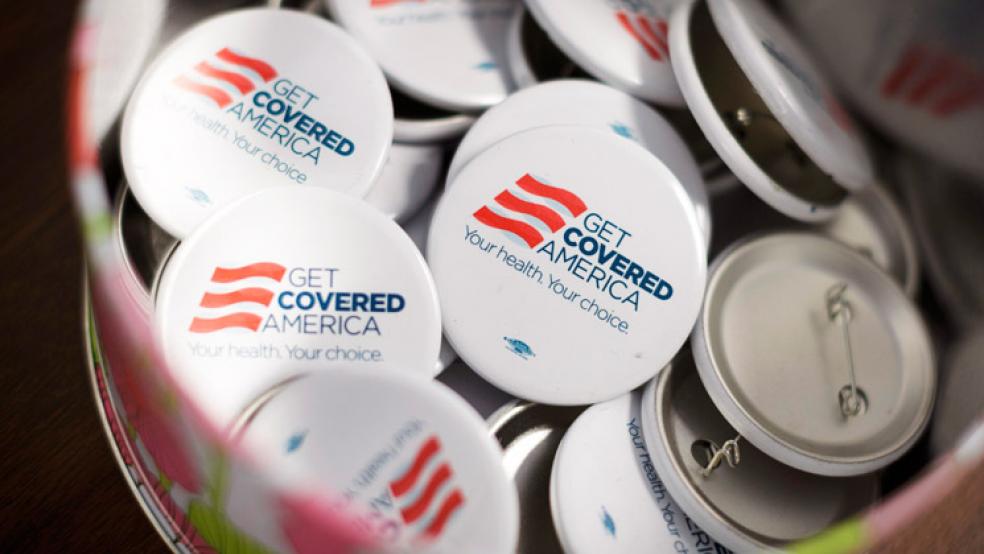The Obama administration said yesterday that 8 million people have enrolled in insurance policies through the state and federal exchanges set up under the president’s health care law.
Obamacare proponents are enthusiastically pointing to the new number, and the stat showing that 35 percent of those who signed up are under age 35, as evidence that the law is working; the latest enrollment numbers are well above even the most optimistic expectations. Yet while the figures might be a political victory for President Obama and Democrats, health economists and experts caution that it’s too soon to celebrate. They argue that overall enrollment figures are not sufficient to properly assess the success of the law.
Related: Obama Says 8 Million Have Enrolled in Plans
“It doesn’t matter that we meet the White House’s goals, it matters that enrollment actually reflects what the insurers were anticipating, and that’s something we don’t know,” Adrianna McIntyre, managing editor of The Incidental Economists said on BloggingHeads in March. “The media has been relying on White House projections and CBO projections, but that’s not actually a very helpful metric to rely on.”
Before the disastrous launch of HealthCare.gov last year, the administration estimated that about 7 million people would enroll, based on projections by the Congressional Budget Office. The CBO later revised its estimate down to 6 million — a figure that’s meant to reflect the average enrollment for the full year. But a late surge of enrollments catapulted signups far above the administration’s original target.
For months, those following the law’s rollout (including The Fiscal Times) have tracked overall enrollment numbers in relation to those targets as a way to measure how well the new exchanges were performing. And although those signups do represent overall demand, they do not give us a clear picture of how the industry will be affected next year and further down the road.
Related: Two New Studies Raise Red Flags on Obamacare
McIntyre’s colleague Austin Frakt, the Incidental Economist’s editor- in-chief, argues that “overall enrollment is a lousy benchmark because it doesn’t tell you anything about the stability of the program at the level at which it matters: state-level markets.”
In a blog posted shortly after the latest enrollment figures were released, Frakt detailed why it’s important to look at the mix of enrollees within each insurance market.
"For state-level insurance markets to function, what’s needed is a mix risk that’s not too far off what insurers expected and for which they priced products. This is necessary for state-level market stability, which is a good policy metric. Related, one would like to see a ‘good’ level of competition in exchanges, with more than a few insurers participating and dominating. My economist colleagues in industrial organization can devise myriad, decent metrics for this, none of which rely on a national, total enrollment figure."
Frakt notes that “market structure is, in fact, more complex than ‘state-level.’ Plans can offer products on a county-by-county basis, so there’s really a patchwork of overlapping markets to consider, as one sees in Medicare Advantage.” (Read his full post here.)
Related: The One Republican Who Wants to Keep Obamacare
To illustrate how differently each state and region is affected by the exchanges, consider the results of an earlier analysis by Kaiser Health News. Kaiser examined the price of premiums in each geographic region set up as an official “market” under Obamacare. (Those markets were established for the purpose of setting insurance rates.)
Kaiser found, for instance, that premiums in rural areas with markets dominated by one major health system were nearly twice the average price. Meanwhile, in regions with several major hospital systems, plans tended to be significantly cheaper since there was more competition. So, assessing the law’s progress with a broad overall approach does not accurately take into account how each individual market is working.
Of course there are other ways to assess how the entire law is shaping up, but it is important to step back when looking at the White House’s enrollment data, and understand that there is still much we do not know.
Top Reads from The Fiscal Times:





